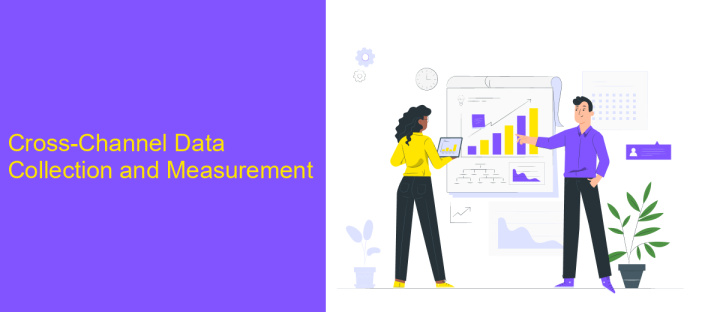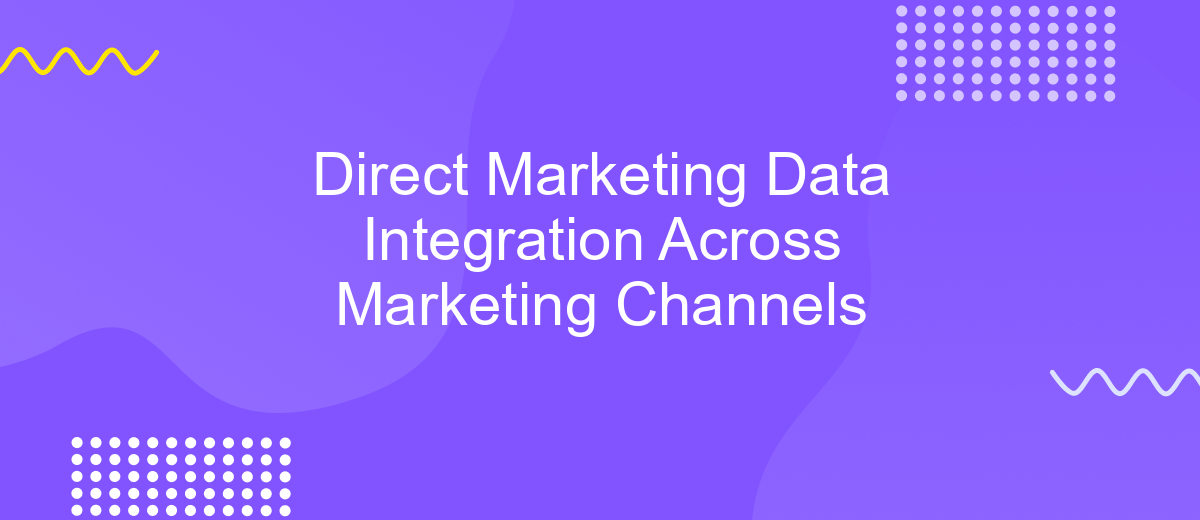Direct Marketing Data Integration Across Marketing Channels
In today's fast-paced digital landscape, direct marketing data integration across multiple channels has become essential for businesses aiming to enhance customer engagement and drive sales. By seamlessly merging data from various sources, companies can create a cohesive marketing strategy that delivers personalized experiences, optimizes campaign performance, and maximizes ROI. This article explores the key benefits and strategies for effective data integration in direct marketing.
Introduction: The Importance of Data Integration in Direct Marketing
In the rapidly evolving landscape of direct marketing, data integration has become a cornerstone for achieving effective and coherent marketing strategies. By seamlessly combining data from various marketing channels, businesses can gain a comprehensive view of their customers, allowing for more personalized and targeted marketing efforts. This integration not only enhances customer experience but also drives higher conversion rates and ROI.
- Improved customer segmentation and targeting
- Enhanced personalization and customer experience
- Increased efficiency in marketing campaigns
- Better measurement and analytics
- Streamlined operations and reduced costs
As competition intensifies and consumer expectations rise, the importance of data integration in direct marketing cannot be overstated. Companies that leverage integrated data are better positioned to anticipate customer needs, optimize their marketing strategies, and ultimately achieve sustainable growth. Therefore, investing in robust data integration solutions is essential for any business aiming to stay ahead in the competitive marketing landscape.
Cross-Channel Data Collection and Measurement

Effective cross-channel data collection and measurement are essential for a cohesive direct marketing strategy. By gathering data from various channels such as email, social media, and web analytics, marketers can gain a comprehensive view of customer behavior and preferences. This holistic approach enables the identification of patterns and trends that can inform more targeted and personalized marketing efforts, ultimately driving higher engagement and conversion rates.
Integrating data across multiple channels can be challenging, but tools like ApiX-Drive simplify this process by automating data collection and synchronization. ApiX-Drive allows marketers to seamlessly connect different platforms, ensuring that data flows smoothly between them. This not only saves time but also reduces the risk of errors associated with manual data entry. By leveraging such integration services, marketers can maintain a unified and accurate dataset, which is crucial for effective measurement and optimization of marketing campaigns across all channels.
Data Integration Challenges and Best Practices

Integrating data across various marketing channels presents significant challenges, primarily due to the disparate nature of data sources and formats. Marketers often face issues with data consistency, accuracy, and timeliness, which can hinder the creation of a unified customer view and affect campaign effectiveness.
- Ensure data standardization: Implement consistent data formats and naming conventions across all channels to facilitate seamless integration.
- Invest in robust integration tools: Utilize advanced data integration platforms that support real-time data synchronization and transformation.
- Establish clear data governance policies: Define and enforce data quality standards, access controls, and compliance measures to maintain data integrity.
- Leverage API integrations: Use APIs to connect disparate systems and automate data flow, reducing manual intervention and errors.
- Regularly audit and cleanse data: Conduct periodic data audits and cleansing activities to eliminate duplicates and outdated information.
By addressing these challenges with best practices, organizations can achieve a cohesive and accurate data ecosystem. This, in turn, enables more effective marketing strategies, personalized customer experiences, and improved decision-making processes.
Leveraging Data for Personalized Marketing Campaigns

In the rapidly evolving landscape of direct marketing, leveraging data for personalized campaigns has become essential for businesses aiming to maximize their reach and impact. By integrating data from various marketing channels, companies can create more targeted and relevant marketing messages, enhancing customer engagement and driving conversions.
Personalized marketing campaigns rely on the collection and analysis of data from multiple sources, such as social media, email, and website interactions. This data provides valuable insights into customer preferences, behaviors, and purchasing patterns, enabling marketers to tailor their messages to individual needs and interests.
- Segmentation: Grouping customers based on shared characteristics and behaviors.
- Predictive Analytics: Forecasting future customer actions using historical data.
- Real-Time Personalization: Delivering customized content in real-time based on current interactions.
- Omnichannel Integration: Ensuring a consistent and personalized experience across all marketing channels.
By effectively utilizing data integration techniques, businesses can craft highly personalized marketing campaigns that resonate with their audience. This not only improves customer satisfaction but also boosts loyalty and long-term profitability. The key lies in continuously refining data strategies to stay ahead in the competitive marketing landscape.
- Automate the work of an online store or landing
- Empower through integration
- Don't spend money on programmers and integrators
- Save time by automating routine tasks
Measuring the Impact of Data Integration
Measuring the impact of data integration in direct marketing involves assessing how effectively integrated data from various marketing channels enhances campaign performance. Key performance indicators (KPIs) such as conversion rates, customer engagement, and return on investment (ROI) provide valuable insights. By comparing these metrics before and after data integration, marketers can gauge improvements in targeting accuracy, message relevance, and overall customer experience. Enhanced data integration often leads to more personalized marketing strategies, which can significantly boost customer satisfaction and loyalty.
Tools like ApiX-Drive streamline the process of integrating data from diverse marketing channels, enabling seamless data flow and real-time analytics. ApiX-Drive automates data synchronization between platforms, reducing manual effort and minimizing errors. This allows marketers to quickly adapt to changing customer behaviors and market trends, ultimately leading to more efficient and effective marketing campaigns. By leveraging such integration services, businesses can ensure that their marketing efforts are data-driven, cohesive, and optimized for maximum impact.
FAQ
What is direct marketing data integration?
Why is data integration important in direct marketing?
How can I integrate data across multiple marketing channels?
What are the challenges of direct marketing data integration?
How can ApiX-Drive help with marketing data integration?
Apix-Drive is a universal tool that will quickly streamline any workflow, freeing you from routine and possible financial losses. Try ApiX-Drive in action and see how useful it is for you personally. In the meantime, when you are setting up connections between systems, think about where you are investing your free time, because now you will have much more of it.


